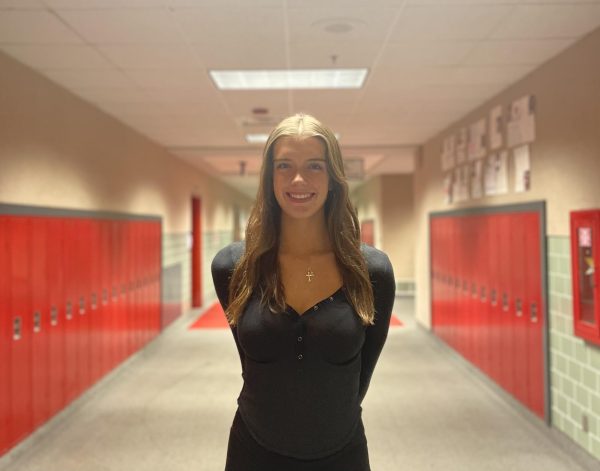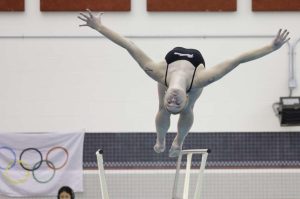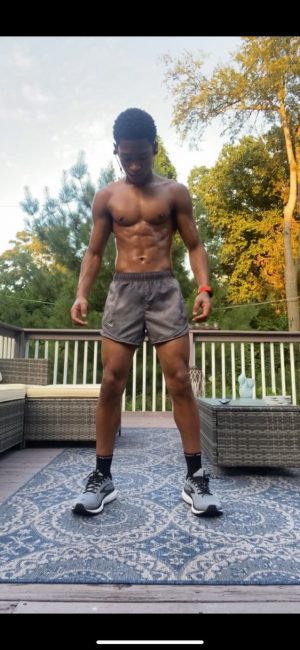Women receive unfair accommodations in sports
September 20, 2022
Women are definitely treated differently than men in sports. The inequalities reach from high school athletics to major league sports. Many people see women as individuals who are not “as good” at sports, and it is important to realize the hardships that are put on them.
A great example of this inequality is the unfair payment of US women’s soccer players. The athletes have advocated for their equality and finally have received justice. Their equal pay lawsuit against the US soccer federation has opened up huge horizons for the team. They will now receive equal and fair pay with the US men’s soccer team.
This was a very long process for the women’s team, but they are extremely proud of the work that they have done to receive justice. The underlying problem is that they should have never had to fight for equality in this situation. The women should have been receiving the same amount of money as the men since the beginning of US soccer.
Another topic that is important to discuss is the Indiana women’s basketball team playing in a hotel ballroom last week in their game against Auburn. This venue was not even close to where the team plays back home. The issue was addressed by the circling social media photos and players reposting the location.
The same issue was brought up during the past NCAA tournament. The women’s basketball player packs were incomparable to the men’s. The men stayed in luxury hotels with large weight rooms while the women were treated with average-style rooms and small hotel weight rooms.
The issue has made a huge impact on female athletes, and the world needs to recognize the effects it could have in the near future. All athletes should be treated with the same respect for continuing to grow in the sport they play.
Tall gymnast defies height standards
Another sport that is considered “better” for shorter athletes is gymnastics. Svetlana Khorkina, a retired Russian gymnast, was 5’5” and considered tall for her sport.
Khorkina was also known for being the best gymnast of the 1990s and early 2000s. She currently holds the most medals for all around championships over any other male or female gymnast.
The uneven bars were her most successful event. She won two olympic titles in 1996 and 2000 for the uneven bars. She also won five world titles and six european titles for the same event.
Khorkina is credited with creating eight moves in the Artistic Gymnastics Code of Points. The moves she created were to accommodate for her height, since she was considered unusually tall.
Khorkina won a total of seven medals between her three olympic trips. She also won a total of 20 World Championship medals.
After the 2004 Olympics, Khorkina retired and became a politician. Since then, she has been Vice-President of the Russian Gymnastics Federation.
She also wrote two books, her first autobiography, Somersaults on High Heels. She then wrote Fitness for the Body and Soul in 2009.
Khorkina’s success in all aspects of her life has helped her succeed in so many things.
Height offers great potential in sports
Being tall in volleyball definitely helps. I have always been taller for my age, and people are constantly asking the question, “volleyball or basketball?”
I actually did play basketball when I was younger. I played for a travel AAU team and was hoping to continue playing. When I played basketball, I was always the tallest and could rebound very easily.
Unfortunately, I hated the super aggressive side of basketball. I was very disappointed that I was quitting, but also excited to try something new out.
When I started playing volleyball, it pretty much came naturally. I had previous jumping skills from basketball, so it was easy to jump high. I started out playing middle blocker, which is what I play now. I was always the tallest, and the middle is always the tallest.
My first club season was successful, and I felt like I got a lot better as I moved on. Now, I have stuck with volleyball and kept playing. Last club season, I played on a high level club team. I played and practiced with girls that will probably go on to play division one volleyball.
This past season was a growing point for me and really helped out my skills.
One sport that does not benefit you in being tall is skiing.
Every other spring break, my family and I go skiing in Colorado. We visit Beaver Creek and usually go skiing for 4 days.
At first, skiing was definitely not my forte. I am 5’11”, so maybe I was built to do something other than be a skier. I quickly learned that having a lower center of gravity is an advantage in skiing.
I also learned that shorter people do not have to fall as far when skiing. This is probably why kids are so good at skiing.
My dad is 6’6”, so being good at skiing is also very hard. When we go skiing, the green hills are more up our alley. However, my brother is the complete opposite.
The last time we went skiing was 2 spring breaks ago, and my brother was much shorter. He wasn’t afraid to go down some of the black rated hills. He was only 5”7’ then, so now it may be harder.
Professional skiers are similar. The average height of a female professional skier is only 5’4” while the average height of a male professional skier is 5’9”.
Kjetil André Aamodt, is former olympic alpine skier from Norway. He has won 5 gold medals and 21 individual World Cup events.
Aamodt only stands at 5’9”, and still brings heat in the Olympics and other ski competitions. He proves that you do not have to be tall to be successful in skiing.
Spud Webb shocked basketball fans despite his height – September 20
A common stereotype basketball players face is that they have to be tall to play. However, some of the most successful basketball players have been much smaller than the average NBA height of 6’6”. Shorter players are often faster and more agile than their taller counterparts.
Spud Webb, a former NBA star, is known for being one of the shortest basketball legends. Standing at just 5’6”, Webb played Division I basketball and enjoyed a lengthy career in the NBA.
Webb played college basketball at Midland College and North Carolina State University. At Midland, a junior college program, Webb was considered the “all-star” of the team and even led the team to a JUCO national championship in 1982.
With Webb’s height, no one believed he would be able to play on a division one basketball team. In 1983, Webb transferred to North Carolina State, a division one school, where he played for two seasons.
Shortly after, Webb was drafted in the fourth round of the 1985 NBA draft by the Atlanta Hawks. Defying the odds, Webb played for the Atlanta Hawks, Sacramento Kings, Minnesota Timberwolves and Orlando Magic.
Webb was the shortest player to ever compete in a NBA Slam Dunk Contest. He ended up winning the contest in 1986.
Webb’s vertical was between 42-46 inches. Even though he was small, Webb was able to dunk in games.
Winning the contest in 1986 gave Webb many opportunities and showed the world that height does not matter. Webb retired in 1997 and is now president of basketball operations for the Texas Legends.












